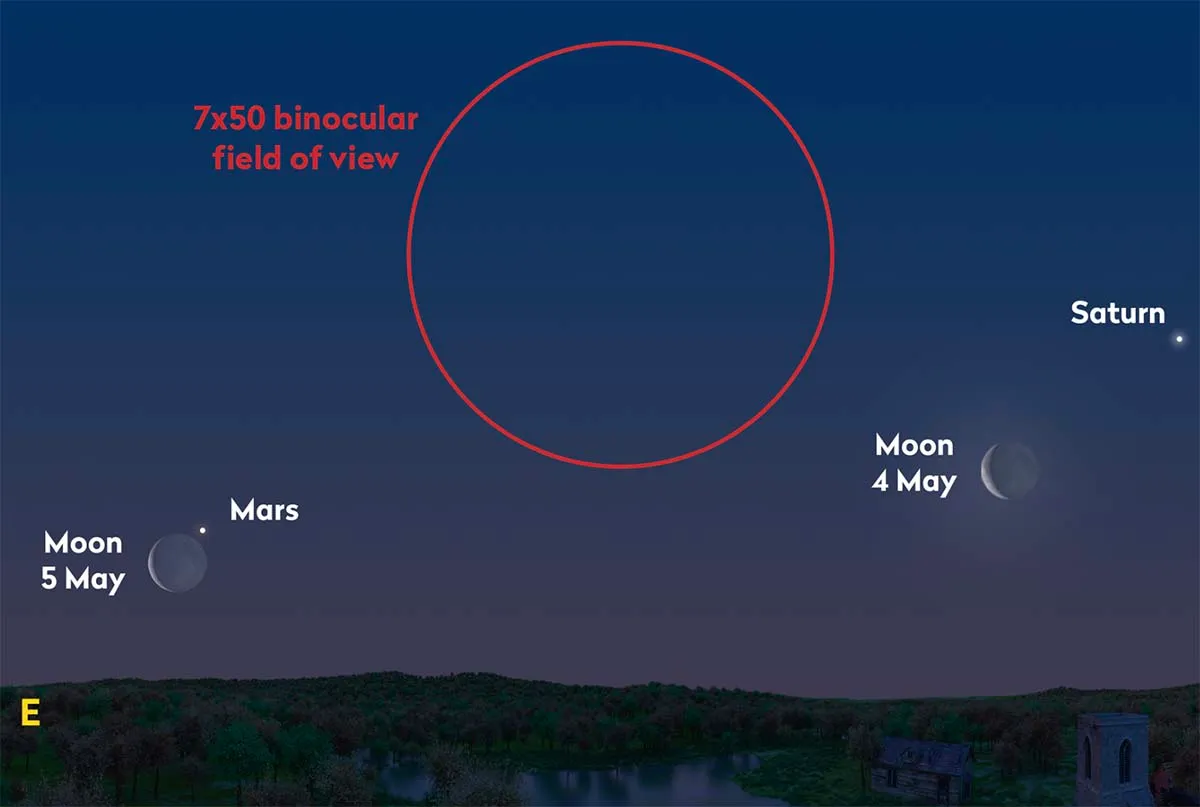There’s no getting away from the fact that May 2024 isn’t a month for planets, but your best bet for planetary observing could well be Saturn.
None of the major planets is even moderately well placed this month, a rather unusual situation overall.
The best is Saturn, but even this is a bit of a challenge!
Although not ideal during May, things will improve soon, and the second half of 2024 is set to be planet heaven.
Get weekly stargazing tips by signing up to receive the BBC Sky at Night Magazine e-newsletter and listening to our Star Diary podcast

Observing Saturn in May 2024
Saturn is currently in the morning sky but not well positioned. It’s located in eastern Aquarius, rising around 04:20 BST (03:20 UT) on 1 May.
On this date the planet has a magnitude of +0.8 and is only ever located in the brightening dawn twilight, so it will take a bit of finding.
As May progresses, Saturn’s position improves marginally and it’s able to reach an altitude of around 10° under reasonably deep twilight.
This is still too low for serious telescopic observation, low altitude causing all sorts of distortions through the eyepiece of a telescope.
Read our guide for tips on how to observe Saturn with a telescope

Saturn meets the Moon
With the naked eye or binoculars, look out for a 20%-lit waning crescent Moon 3.3° east of Saturn on the morning of 4 May.
They should be visible in the same binocular field of view, very low above a flat east-southeast horizon around 04:40 BST (03:40 UT).
The Moon pays a second visit on 31 May, this time as a 45%-lit waning crescent, 3.2° to the southwest of the planet.
Catch both objects together after 03:30 BST (02:30 UT) on this date.
Saturn’s overall position won’t improve much this side of the summer solstice, but the improvement afterwards will be rapid.
If you do manage to grab a view of the planet through a telescope, its rings are now showing a very shallow tilt angle.
To capture the sight, read our guide on how to photograph a thin crescent Moon.
This guide appeared in the May 2024 issue of BBC Sky at Night Magazine
